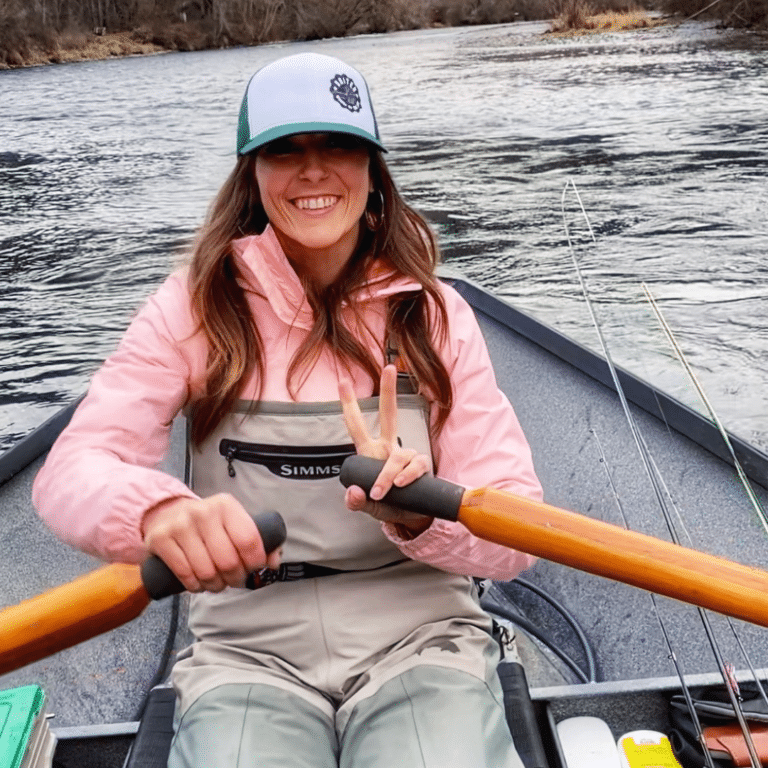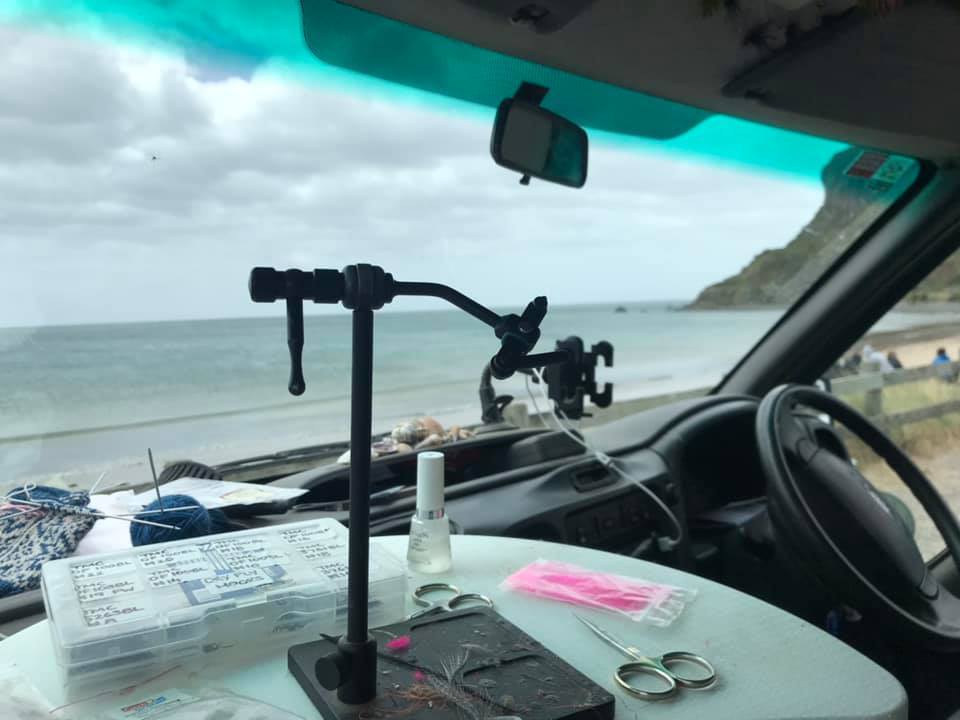Blog Education Tabbitha Bruce Warm Water Fishing
October 24, 2022
Tabbitha grew up following her dad and grandpa around fishing the streams, rivers and lakes of the Rogue Valley in Southern Oregon. She is the co-founder of Southern Oregon Women on the Fly, a team member for UWOTF, a certified yoga instructor, fly-fishing guide, small business owner and mother of three beautiful girls. Although it’s only been a few years since converting to the fly rod, Tabbitha is out on the river untangling leaders and fishing flies out of trees with new fly fishers on a regular basis.
This week Tabbitha discusses gear and fishing tactics for catching bass on the fly. Watch her full presentation on our YouTube channel.
Gear tips- rods, lines, flies
RODS
- 6 Weight Rods
- Great all round rod for bass fishing
- Ideal for throwing heavier sinking lines and larger, heavier bait fish style flies.
- More effective in the spring during the spawn when the bass are more aggressive and fight harder
- Smaller rods can make playing the fish more fun however larger rods will help land the fish faster for less stress and a safer release
CHOOSING FLY LINES AND FLIES
Use saltwater fly lines when water/air temps are above 70 degrees; they’re designed to perform better in warm weather conditions. Use standard lines when water temps are below 70 degrees.
- Types
- Full sink lines
- Ideal for deep lakes, moving water and very hot days
- Available in a variety of sink rates
- Useful for getting flies into feeding zone faster; keep flies in the feeding zone while retrieving flies
- Use a short leader with leech patterns, balanced leeches and clouser patterns
- Full sink lines
- SInk tip lines
- Ideal for shallow water, in lakes or moving water
- Allows you to use non-weighted flies and target subsurface feeding zone (2-3′ below surface)
- Use with wooly buggers, leech patterns, clousers, streamers, etc
- SInk tip lines
- Intermediate sink lines
- Sink rate is 1-2″ per second
- Useful for fishing subsurface to about 15′ or when casing into weeds and shallow brushy areas
- Use with wooly buggers, leeches, nymph patterns
- Intermediate sink lines
- Floating lines
- Use aggressive weight forward line with short head to cast heavy flies
- Ideal for lakes with moderate to warm water and active, moving fish or fish feeding on the surface
- Useful for fishing weedy/shallow areas
- Use with frogs, hoppers, adult damsel flies, poppers, gurglers and other flies that make noise and create a disturbance on the water
- Can be used with subsurface flies with a longer leader
- Floating lines
- Leaders and tippet
- Bass are not leader shy and are aggressive feeders- use short, heavy leaders for turning over flies and preventing break offs
- For poppers and streamers, use 6-8 ft of 10-15 lb mono
- Use 9′ of 3x tippet in small lakes, 12′ of 2-3x tipp
et in large lakes
- Leaders and tippet
techniques
FISHING FROM A BOAT
- Look for structure- rock cliffs, rocky channels, weeds or bushy structure
- Use heavy flies and/or sinking line to get your fly down quickly, then use short strips to retrieve fly
- Let the wind drift the boat and troll or anchor and wind drift- wind and water create natural movement of the fly
- When anchored, look for deep channels, cast toward bushy or weedy structure
FISHING FROM SHORE
- Look for structure- rocks, logs, weedbeds, willows
- Use intermediate or floating line and slower retrieve
- Fish early and late in the day






